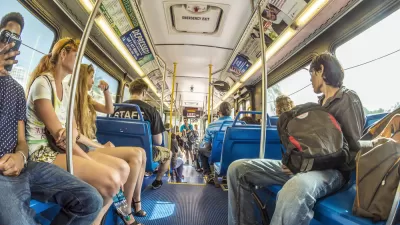Andres Viglucci explores how a strategy being considered in Miami-Dade County seeks to transform distressed commercial properties into green spaces, sparking economic redevelopment throughout the county.
During their recent Great Park Summit, Miami-Dade County's parks department unveiled a new strategy that could provide a significant jumpstart to achieving their 50-year master plan and its central goal of providing open space within walking distance of every resident. Still in its conceptual stages, the promising proposal would turn distressed car lots and failed strip malls into neighborhood parks, explains Viglucci.
"The approach, dubbed Red Fields to Green Fields, is based on a strategy developed by Michael Messner, a Wall Street hedge-fund manager who says it can help reverse the flow of red ink in commercial real estate while removing blight and jump-starting the economic redevelopment of neighborhoods hit hardest by the recession."
With $40,000 raised in grants alone, Miami-Dade hopes to start a pilot project within the year, reports Viglucci. Cities like Atlanta, Denver and Houston have already followed suit, and are testing the strategy in their cities.
According to Jack Kardys, the county parks director, "A model that agency planners developed shows that a 10-acre tract converted into a park and ancillary development mixing housing with commercial uses could generate $500,000 in property taxes a year - enough to cover $200,000 in annual park maintenance and operations, with the balance going into local government coffers." Kardys adds that parks attract development and heighten property values in their surrounding areas.
FULL STORY: On the ‘Great Park Summit’ agenda: Turning Miami-Dade’s failed strip malls, car lots into parks

Planetizen Federal Action Tracker
A weekly monitor of how Trump’s orders and actions are impacting planners and planning in America.

Restaurant Patios Were a Pandemic Win — Why Were They so Hard to Keep?
Social distancing requirements and changes in travel patterns prompted cities to pilot new uses for street and sidewalk space. Then it got complicated.

Map: Where Senate Republicans Want to Sell Your Public Lands
For public land advocates, the Senate Republicans’ proposal to sell millions of acres of public land in the West is “the biggest fight of their careers.”

Maui's Vacation Rental Debate Turns Ugly
Verbal attacks, misinformation campaigns and fistfights plague a high-stakes debate to convert thousands of vacation rentals into long-term housing.

San Francisco Suspends Traffic Calming Amidst Record Deaths
Citing “a challenging fiscal landscape,” the city will cease the program on the heels of 42 traffic deaths, including 24 pedestrians.

California Homeless Arrests, Citations Spike After Ruling
An investigation reveals that anti-homeless actions increased up to 500% after Grants Pass v. Johnson — even in cities claiming no policy change.
Urban Design for Planners 1: Software Tools
This six-course series explores essential urban design concepts using open source software and equips planners with the tools they need to participate fully in the urban design process.
Planning for Universal Design
Learn the tools for implementing Universal Design in planning regulations.
Heyer Gruel & Associates PA
JM Goldson LLC
Custer County Colorado
City of Camden Redevelopment Agency
City of Astoria
Transportation Research & Education Center (TREC) at Portland State University
Camden Redevelopment Agency
City of Claremont
Municipality of Princeton (NJ)





























